Lucidea’s Lens: Knowledge Management Thought Leaders
Part 99 – Dennis Pearce

Stan Garfield
 Dennis Pearce is a knowledge management and collaboration strategist with extensive experience in engineering, manufacturing, IT, strategic planning, process improvement, and change management. He is the Online Communities and Collaboration Strategist for Start Early and the former Enterprise Knowledge Architect for Lexmark International, focusing on internal and external collaboration strategies and systems.
Dennis Pearce is a knowledge management and collaboration strategist with extensive experience in engineering, manufacturing, IT, strategic planning, process improvement, and change management. He is the Online Communities and Collaboration Strategist for Start Early and the former Enterprise Knowledge Architect for Lexmark International, focusing on internal and external collaboration strategies and systems.
Dennis is interested in knowledge management, education reform, Communities of Practice, collaboration, and critical thinking. His book chapter “Artificial Intelligence in the Plastics Industry” was published in Computer-Integrated Manufacturing in Plastics Processing Plants edited by Keith T. O’Brien.
Here are definitions for five of Dennis’s specialties:
- Collaboration: Interacting with peers and colleagues to exchange ideas, share experiences, work together on projects, and solve problems.
- Communities: Groups of people who share an interest, a specialty, a role, a concern, a set of problems, or a passion for a specific topic. Community members deepen their understanding by interacting on an ongoing basis, asking and answering questions, sharing their knowledge, reusing good ideas, and solving problems for one another.
- Enterprise Social Networks: Internal, private social networking platforms used for communications and collaboration within an organization.
- Lessons Learned: Explaining what an individual or team has learned as a result of their experience, using documents, presentations, discussions, and recordings. This includes capturing what was tried, what worked, what didn’t work, what to do, what to avoid, problems faced, how problems were solved, what to do differently next time, and key insights and nuggets.
- Working Out Loud (WOL): An approach to collaboration in which employees form a virtual network and are encouraged to talk about their work and publish what they do. The goal is to inform others about current projects and to respond, learn, and apply the knowledge of others to their own work. WOL combines observable work (creating spaces where others can engage with your content) with narrating your work (posting in social software). Leading by example and persuading others helps create an open culture of truth, transparency, and trust; provides feedback loops; and spans organizational boundaries.
Dennis created the following content. I have curated it to represent his contributions to the field.
Enterprise Social Network Adoption
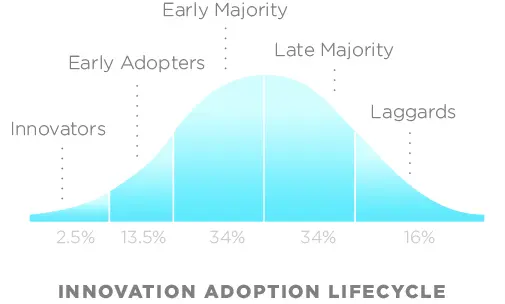
Successful ESN adoption is one that meets these criteria:
- The technology is used routinely and repeatedly.
- There is behavior change as a result of the new capabilities provided by that technology.
- The individuals participating in the ESN derive personal value from their participation.
- The organization as a whole also derives value from those individuals’ participation.
Lessons Learned
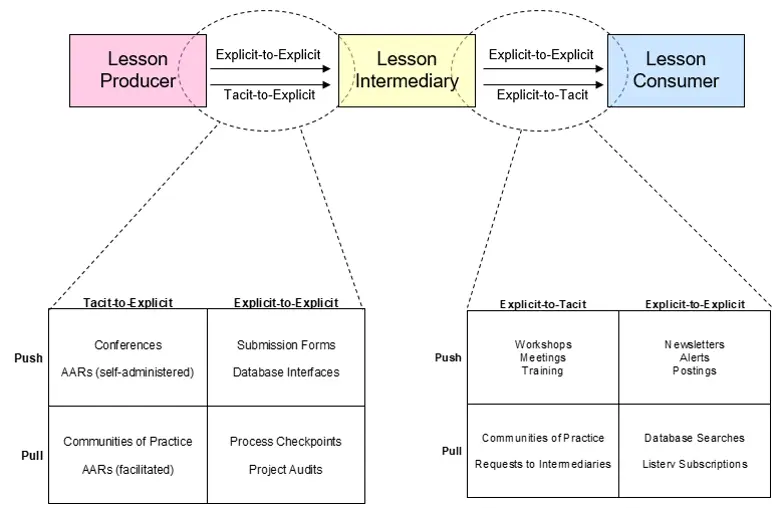
Nine Stages of the Lessons Learned Life Cycle
- Initiation: Some event that triggers the need to capture a lesson.
- Recognition: The awareness by the organization that the event in question contains a lesson.
- Capture: Gathering the essential facts, stories, and other elements that will create the lesson.
- Validation: How do we know that the lesson we want to preserve is valid and correct?
- Scoping: Determining how broad or narrow the applicability of this lesson is to the organization.
- Storage: How will this lesson be preserved so that it can be accessed in the future?
- Dissemination: Getting the lesson into the hands (and heads!) of the people in the organization who need to know it.
- Institutionalization: This is probably the most crucial stage. How do we ensure that the lesson is embedded so deeply in the organization that we can say that it has been learned? What does it even mean for a company to learn something?
- Maintenance: Some lessons are context or time dependent. The usefulness of a lesson might fade over time, and today’s best practice could even become tomorrow’s disaster as situations change. So how do we ensure that lessons remain fresh and relevant? How do we guarantee that we have not only organizational memory but also organizational forgetting where appropriate?
Working Out Loud
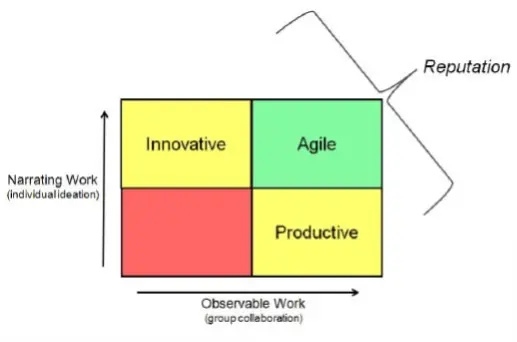
Working Out Loud – Where it Fits
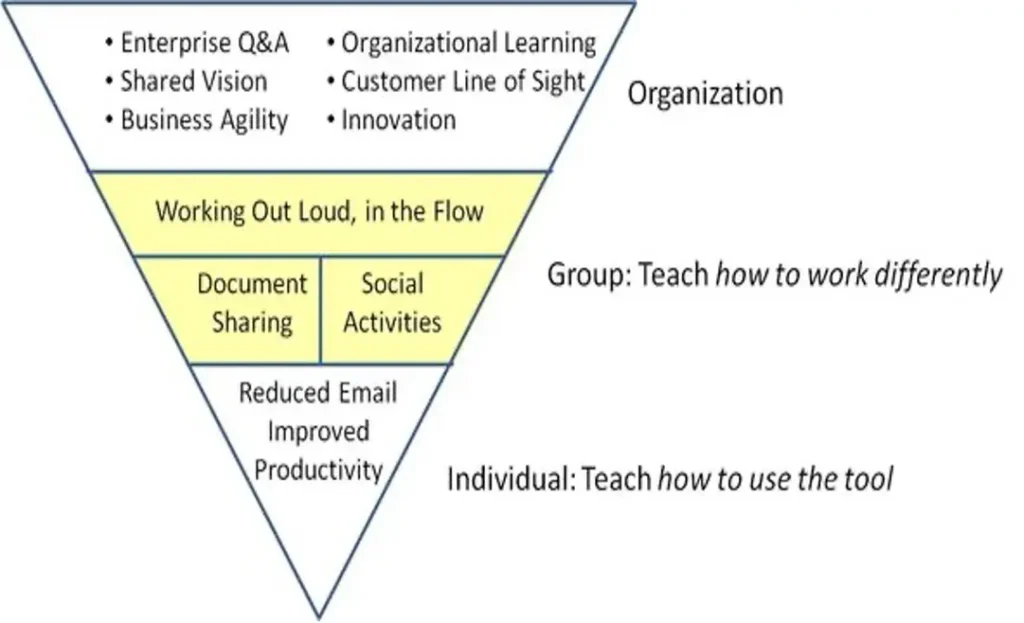

Stan Garfield
Dive into Stan’s blog posts for advice and insights drawn from his many years as a KM practitioner. You can also download a free copy of his book, Profiles in Knowledge: 120 Thought Leaders in Knowledge Management from Lucidea Press, and its precursor, Lucidea’s Lens: Special Librarians & Information Specialists; The Five Cs of KM. Learn about Lucidea’s Presto, SydneyDigital, and GeniePlus software with unrivaled KM capabilities that enable successful knowledge curation and sharing.
**Disclaimer: Any in-line promotional text does not imply Lucidea product endorsement by the author of this post.
Never miss another post. Subscribe today!
Similar Posts
Lucidea’s Lens: Knowledge Management Thought Leaders
Part 110 – Tom Stewart
In this Lucidea’s Lens profile Stan Garfield spotlights Tom Stewart—strategist author and former HBR editor—whose groundbreaking thinking redefined intellectual capital.
Lucidea’s Lens: Knowledge Management Thought Leaders
Part 109 – Dave Snowden
Dave Snowden Founder of The Cynefin Company applies complexity science anthropology and narrative to help organizations make sense of uncertainty and change.
Lucidea’s Lens: Knowledge Management Thought Leaders
Part 108 – George Siemens
In this edition of Lucidea’s Lens Stan Garfield profiles George Siemens—pioneering voice in connectivism and a driving force behind MOOCs and learning analytics—whose work continues to reshape how we understand learning knowledge creation and the role of technology in education and professional development.
Lucidea’s Lens: Knowledge Management Thought Leaders
Part 107 – Arthur Shelley
Explore Arthur Shelley’s insights on leadership co-creation and knowledge strategy through curated works that showcase his expertise in collaboration and innovation.
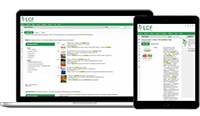






Leave a Comment
Comments are reviewed and must adhere to our comments policy.
0 Comments